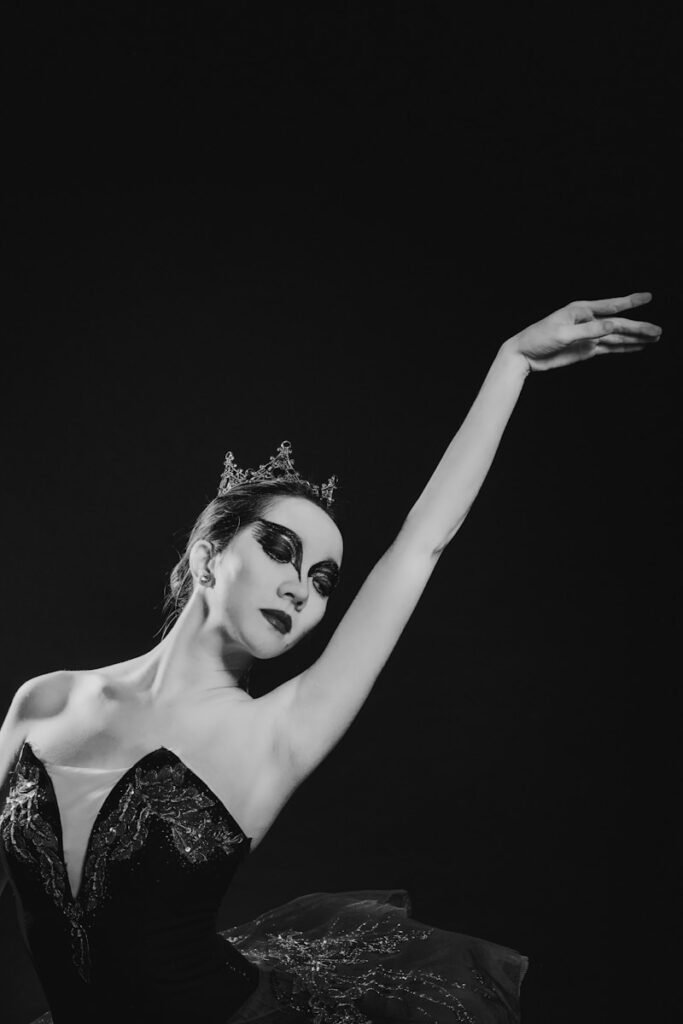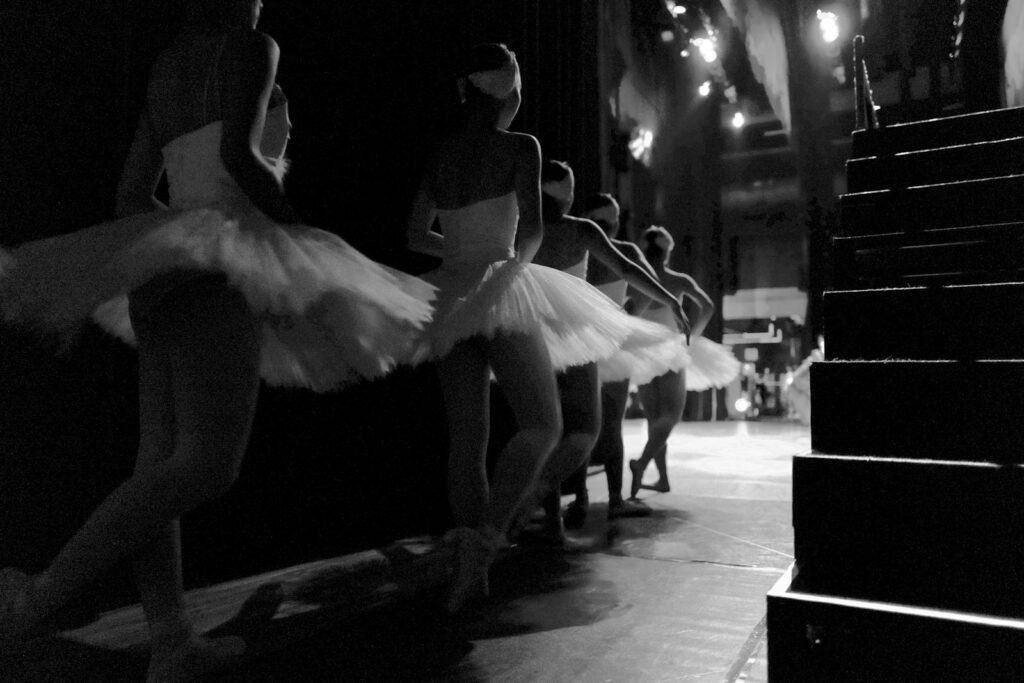
Famous Ballets You Should Know
Prepare yourselves, ballet enthusiasts, for a journey that will leave you in awe as we explore some of the most iconic productions in the world of dance. These timeless classics are a mesmerizing fusion of artistry, storytelling, and technical brilliance that never cease to enthrall audiences of all generations. In the words of the esteemed ballerina Anna Pavlova, “To follow a dancer’s path is to chase after a dream.” And what better way to embark on this surreal voyage than by immersing yourself in the enchanting realm of renowned ballets!
From the delicate arabesques of “Swan Lake” to the fiery intensity of “Romeo and Juliet,” each ballet weaves its own intricate tale through the eloquence of movement. As the visionary choreographer George Balanchine wisely remarked, “Ballet holds significance and importance – indeed. But above all else, it brings pleasure.” So allow yourself to be swept away by Tchaikovsky’s ethereal melodies and the dancers’ graceful leaps as they transport you to a dimension where emotions flow not through spoken words but through the ptry painted by motion. Delve into these masterpieces and uncover that classic ballet is more than just an art form – it serves as a portal into our shared human experiences, reflecting our deepest longings and fears while celebrating the inherent beauty within us all.
The Nutcracker: A Holiday Classic
The Nutcracker, a mesmerizing holiday classic that dances its way into our hearts each festive season, is a captivating ballet that mystifies both the young and old alike. From the moment the enchanting Sugar Plum Fairy graces the stage to the whimsical battle between the Nutcracker Prince and the Mouse King, this ballet weaves a timeless tale of awe and enchantment.
Its enduring popularity can be attributed to its spellbinding narrative, Tchaikovsky’s captivating score, and the vibrant characters that burst forth with life on stage. As renowned Mikhail Baryshnikov once mused, “The Nutcracker is a ballet cherished not only by audiences but also by performers themselves. It truly encapsulates the essence of the holiday season with its jubilant spirit and magical movements.” So this holiday season, embark on an adventure to Clara and the Nutcracker Prince’s Land of Sweets, and let this classic ballet’s magic ignite joy and wonder in your soul.
Swan Lake: The Ultimate Romantic Ballet
In the enigmatic realm of Swan Lake, where the artistry of classical ballet ascends to its zenith, it has entranced spectators for eons with its enduring narrative of love, treachery, and redemption. The fluid movements of the swans, the melancholic melodies of Tchaikovsky’s renowned composition, and the otherworldly ambiance all conspire to transport onlookers into a realm suffused with romance and mystique. As the illustrious ballerina Anna Pavlova once mused: “To follow in the wake of the Swan is to first fashion within ourselves that very essence.”
The tale unfurls with an air of tragic allure; recounting Prince Siegfried’s ill-fated passion for Odette – a princess ensnared in avian form by a malevolent sorcerer. Their affection undergs trials wrought by deception and malevolent forces, culminating in a gut-wrenching climax that never fails to evoke profound sentiments. Witnessing their elegant duet onstage evokes a tempestuous whirlwind embracing ardor and desolation; imparting upon viewers an intimate understanding of love’s potency interlaced with sorrow through dance’s eloquent expression. Undoubtedly, Swan Lake stands as an opus transcending temporal confines; imprinting an enduring impact upon all fortunate enough to bask in its resplendence live before them.
The Sleeping Beauty: A Fairytale in Dance
In the mesmerizing realm of ballet, a timeless masterpiece known as “The Sleeping Beauty” once existed. This enchanting fairytale brought to life through dance is a dazzling blend of romance, magic, and grace. For those who are passionate about ballet, witnessing the ethereal beauty of Aurora’s awakening on stage never fails to captivate the soul.
The intricate choreography by Marius Petipa, combined with the spellbinding Tchaikovsky score, creates a balletic extravaganza that transports the audience to a world where dreams and reality intertwine in perplexing ways. As legendary ballet dancer Rudolf Nureyev once mused, “To dance is to be out of yourself, larger, more beautiful, more powerful.” Indeed, observing “The Sleeping Beauty” unfold before your eyes feels like stepping into a universe where every movement narrates a tale and every pirouette spins a story of love and rebirth.
Diving into the elegance and artistry of classical ballet through performances such as “The Sleeping Beauty” is not just an experience- it’s an exploration into the depths of culture and tradition. It serves as a poignant reminder of storytelling’s enduring power through movement- an age-old language that transcends all boundaries. In a world filled with chaos and cacophony, classic ballet offers us solace in its sanctuary where beauty and grace reign supreme; it underscores the significance of safeguarding our cultural legacy for generations yet to come.
Giselle: A Hauntingly Beautiful Ballet
Giselle leads us on a perplexing journey filled with love, betrayal, and the supernatural, leaving audiences in awe of its ethereal beauty and haunting narrative. As the curtains ascend, we find ourselves thrust into a realm where love defies all boundaries, and departed spirits yearn for absolution through the art of dance. This ballet intricately balances between the earthly realm and the supernatural world, captivating viewers with its poignant grace.
In the immortal words of Martha Graham, “Great dancers are not great because of their technique; they are great because of their passion.” Giselle demands performers to embody not only classical ballet’s technical precision but also to delve deep into raw emotion and character depth to breathe life into this sorrowful tale. The enigmatic allure of Giselle lies in its ability to transcend time and cultural barriers, touching hearts worldwide with its universal themes of love, forgiveness, and redemption.
Don Quixote: A Spanish Spectacle
A tale ablaze with Spanish flair, “Don Quixote” is a ballet that dazzles and mystifies audiences with its vivacious choreography and animated characters. As the dancers whirl and leap across the stage, one can almost taste the heat of the Spanish sun and hear the melodic strum of guitars in the background. This ballet transports you to a realm of chivalry and passion, where love reigns supreme.
In the words of Rudolf Nureyev, the iconic dancer and choreographer, “Don Quixote demands unparalleled technical skill and artistry from its performers. It embodies a jubilant celebration of Spanish culture, brought to life through dance.” With its opulent costumes, intricate footwork, and whimsical storytelling,” Don Quixote” is a visual feast that showcases classical ballet’s enduring ability to captivate audiences young and old alike.
Romeo and Juliet: Shakespearean Ballet at Its Best
Immersed in the mesmerizing realm of classical ballet, one is immediately ensnared by the enchanting narrative of Romeo and Juliet, a tale brought to life on stage with intricate choreography and profound emotional resonance. This iconic Shakespearean ballet encapsulates the essence of tragic love and timeless beauty, standing out as a masterpiece within the ballet canon.
Through poignant pas de deux and heartfelt expressions of love and despair, Romeo and Juliet sweeps audiences into the heart of Verona, where the ill-fated romance between star-crossed lovers unfolds before their eyes. As esteemed choreographer Kenneth MacMillan once mused, “The characters’ emotions and passions demanded to be expressed through dance.” It is indeed through the medium of dance that Shakespeare’s intricate story is vividly conveyed, leaving spectators spellbound by each graceful yet dramatic movement.
Each pirouette and arabesque in Romeo and Juliet serves as a poignant testament to art’s ability to transcend time boundaries while igniting imaginations. Witnessing Shakespeare’s iconic characters meet their tragic destinies on stage serves as a stark reminder of classic ballet’s enduring relevance in capturing humanity’s deepest emotions and experiences. In an ever-evolving world, ballet’s beauty offers a glimpse into universal truths that unite us all in shared passions.
Coppélia: A Charming Comedy
Coppélia, renowned for its whimsical charm and light-hearted storyline, is a ballet that never ceases to enthrall audiences with its comedic flair. The tale follows young lovers Swanilda and Franz as they find themselves ensnared in the enigmatic workshop of a peculiar inventor, brimming with eerily lifelike dolls. As the narrative unfolds in a whirlwind of romance and amusement, spectators are whisked away into a realm where reality intertwines with fantasy, leaving them spellbound by the enchantment of the stage.
The character of Dr. Coppélius, the idiosyncratic creator fixated on crafting his doll masterpiece Coppélia, injects an element of eccentricity into the ballet. Renowned ballerina Sylvie Guillem once mused that “Coppélia offers a delightful fusion of technical prowess and humor that delights both performers and viewers.” The intricate footwork and jovial interactions among the characters not only showcase the dancers’ skill but also bring joy to all who witness it. With its heartwarming plotline and expressive choreography, Coppélia remains an enduring classic cherished by aficionados of ballet across the globe.
La Bayadère: Exotic and Enchanting
Entering the enchanting realm of classical ballet, one is immediately entranced by the spellbinding narrative of La Bayadère. In the midst of exotic India, this ballet unravels a story filled with love, betrayal, and redemption in a way that astounds with its sheer grace and beauty. The intricate dance sequences and emotive storytelling whisk the audience away to a place where reality melts into fantasy seamlessly.
The dancers float across the stage in a hypnotic display of talent and creativity, pulling spectators into the evocative world of La Bayadère effortlessly. The stark contrast between the ethereal purity of the white act and the lavish splendor of the Kingdom of Shades leaves an indelible mark on all who bear witness to it. As Rudolf Nureyev once remarked, “La Bayadère demands dancers’ technical prowess and artistic flair alike, calling for precision as well as emotional depth.” The grandiose spectacle paired with profound storytelling renders La Bayadère an experience that lingers long after curtain call for both performers and viewers alike.
In the domain of classical ballet, La Bayadère stands tall as a symbol of timeless storytelling through movement. It serves as a poignant reminder of how culture’s beauty transcends boundaries and endures through generations. Immersed in La Bayadère’s world, we are prompted to honor and celebrate traditions that have molded our appreciation for artistry and performance like never before.
Paquita: A Dazzling Showcase of Classical Ballet
Paquita, a ballet of endless fascination, never ceases to astound audiences with its intricate display of classical ballet technique and captivating storyline. The graceful movements and complex footwork displayed in this piece truly highlight the beauty and precision of the art form. As a ballet instructor, I always stress to my students the necessity of mastering the technical elements of Paquita in order to fully unveil its brilliance on stage.
The sheer grandeur of Paquita’s choreography and the sophistication of its costumes leave spectators spellbound. As acclaimed choreographer George Balanchine once remarked, “Ballet is important and significant – yes. But first of all, it is a pleasure.” Indeed, witnessing a performance of Paquita is not merely a visual spectacle but also an exuberant celebration that pays homage to the rich history and tradition of classical ballet.


